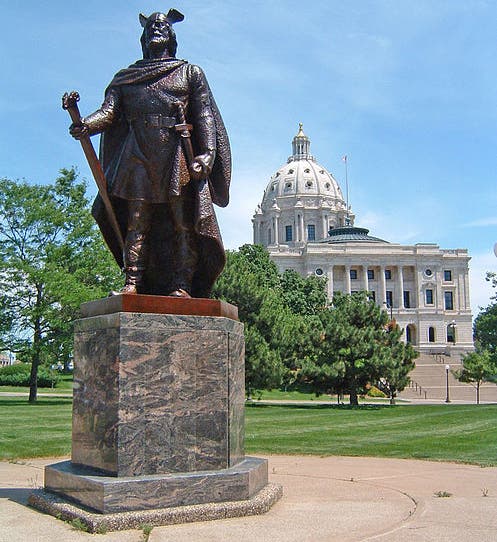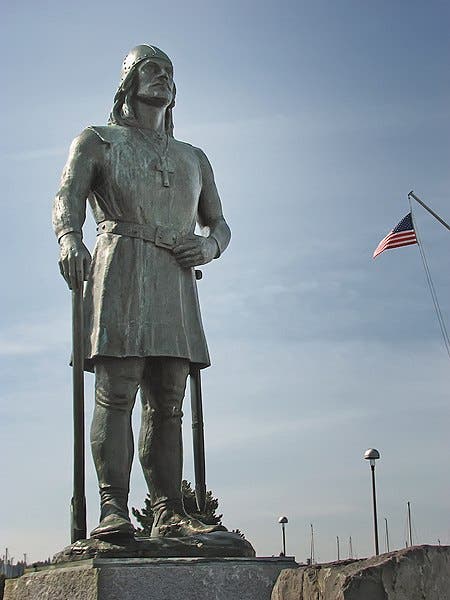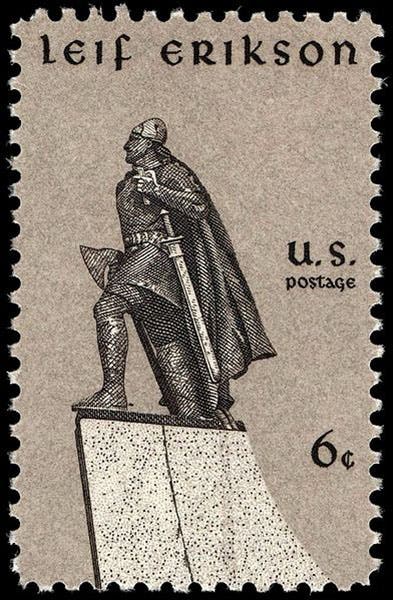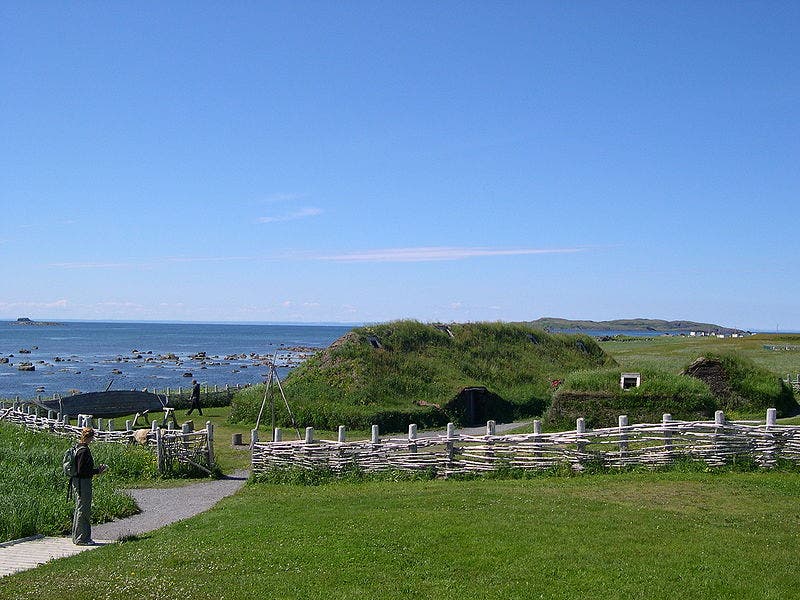Scientist of the Day - Leif Erikson
Oct. 9 is Leif Erikson Day, if you live in Wisconsin, Minnesota, and a few other states of the upper Midwest, or Saskatchewan in Canada. We don't know the birth or death date of Erikson – we are not even sure of the exact years of his life – but he seems to have been born around 970, probably in Iceland, the son of Erik the Red, who was Norse. His father was the first to colonize Greenland, where Leif grew up. Sometime around 1000 A.D., according to several sagas, Leif's ship was accidentally blown to a land west of Greenland. Erik returned with colonizers to found a settlement – actually, several settlements – but the best known was the one situated in a land supposedly brimming with wild grapes: Vinland.
For a long time, no convincing evidence came to light confirming that Leif Erikson had actually settled America some 500 years before Columbus, but in 1960, a husband-wife team discovered a Norse settlement on a peninsula in northern Newfoundland. The site was originally called L'Anse aux Méduses, or Jellyfish Cove, but its name has morphed into the more-pleasant sounding L'Anse aux Meadows. It may or may not be the Vinland of Leif Erikson, but it is most definitely a Norse settlement, the only Norse site known in North America, and it is certainly possible that it was connected to Leif Erikson's voyage. In 1978, L'Anse aux Meadows was designated the 4th World Heritage Site. The WHS entry carefully avoids mentioning Leif Erikson, but we shall ignore that as an oversight (sixth and seventh images).
Leif Eriksson is extremely popular among people of Scandinavian descent in the United States, and he is commemorated by an inordinate number of statues. There is one in St. Paul (first image) and another in Duluth; in Chicago (second image) and Minot, North Dakota; and one in Seattle overlooking Shilshole Bay on Puget Sound (third image). The earliest U.S. statue was erected in Boston in 1887, and it still stands (fourth image), although it doesn't do much to further the legend of Leif's rugged Viking stature. The grandest statue is in Reykjavik, Iceland, standing on a soaring granite base and looking down a long avenue to the sea. To keep with our American theme, we show a U.S. postage stamp commemorating Erikson, based on the Reykjavik statue (fifth image).
Why do we celebrate Leif Erikson Day on Oct. 9? It is an interesting story. In 1825, a small ship, the Restauration, packed with 52 emigres, left Norway for America, arriving in New York City harbor on Oct. 9, 1825. It was the beginning of what would be wave after wave of Scandinavian immigration. In 1925, Norwegians in the U.S. persuaded President Coolidge to give a speech in Minnesota, honoring the centennial of the landing of the Restauration and the contributions of Scandinavian-Americans to U.S. culture.
After the centennial, a Norwegian professor and promoter at the University of Wisconsin, Rasmus Anderson, whose ancestors came over on the Restauration, lobbied the Wisconsin legislature to establish Oct. 9 as Leif Erikson day, which they did in 1929. Eventually, six other states followed suit, and the day is now also a national day of commemoration, by annual presidential proclamation. Washington was one of those seven states, which is why there is a statue of Erikson on Puget Sound.
I would like to thank Jole Shackelford, a fellow historian of science at the University of Minnesota, for enlightening me some years ago about the nuances of Leif Erikson Day in the U.S and the role of Rasmus Anderson. Jole also informs us that "Leif" is pronouced "Lafe" in most of Norway (rhymes with “Safe”), and sometimes "Life", but never "Leaf" (his younger son is named Leif Harald, so he should know). The proper spelling of the name in Norway is Leiv Eiriksson, but Leif Erikson seems to have settled in as the spelling of choice in the U.S., so we have stuck with that spelling here.
We are grateful to the crew of the Restauration for landing in New York on Oct. 9, and not, say, Oct. 13. It would be a drag to celebrate Leif Erikson Day after Columbus Day. Dr. William B. Ashworth, Jr., Consultant for the History of Science, Linda Hall Library and Associate Professor emeritus, Department of History, University of Missouri-Kansas City. Comments or corrections are welcome; please direct to ashworthw@umkc.edu.












